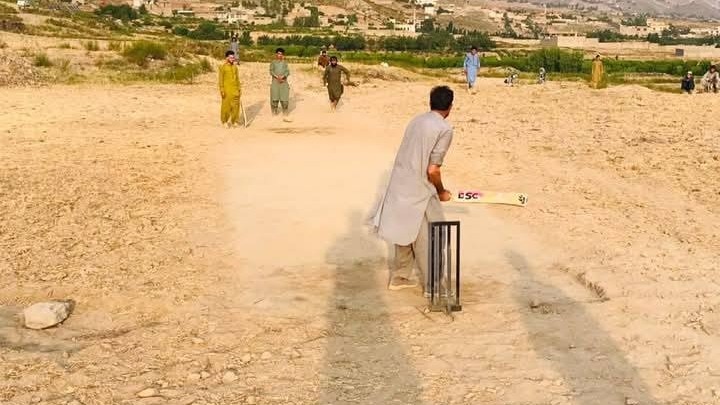Pakistan’s cricketing history is deeply intertwined with the sound of tape-ball cricket. From dusty roads to lively alleyways, this format has nurtured legendary fast bowlers. Icons such as Wasim Akram, Waqar Younis, Shoaib Akhtar, Umar Gul, and Mohammad Amir all developed their skills in this unique style, leaving their mark on cricket’s legacy.
Continuing this tradition is Haris Rauf, a modern speedster who consistently bowls over 150 km/h, showcasing the enduring influence of tape-ball culture.
However, the significance of tape-ball cricket extends beyond Pakistan. Since the 1990s, Afghanistan has embraced this format as part of its cricketing narrative. Hazratullah Zazai, known for achieving six sixes in a T20 over and the second-highest T20I score of 162 against Ireland in 2019, draws heavily from the fearless batting style cultivated by tape-ball cricket.
Pioneers like Taj Malik have been instrumental in transforming tape-ball cricket in Afghanistan from a casual activity to a platform for national talent. “Afghanistan has developed its tape-ball scene independently. While Pakistan enjoys more social media exposure and famous players, we’ve been practicing it since the 1990s,” remarked Sheer Rahman Khater, the president of Afghanistan Tapeball Cricket (ATC), in an exclusive interview with India Today.
Establishing a Foundation
In Afghanistan, the sound of a taped tennis ball striking a bat resonates as deeply as the call to prayer. Tape-ball cricket serves as the grassroots heartbeat of the nation, with its own federation registered under the Ministry of Sports, distinct from the Afghanistan Cricket Board (ACB).
On a global scale, the International Tape Ball Council (ITC), based in the U.S., oversees the format with active members from across South Asia, including Pakistan, Afghanistan, India, Sri Lanka, and Bangladesh. Still, the game truly thrives in Afghanistan’s streets and open areas, with young players creating makeshift pitches using little more than a bat and a tape ball.
Growth and Recognition
Tape-ball cricket has blossomed into a grassroots movement in Afghanistan, with local and provincial tournaments energizing communities. Events like the 10-day Eid Zurmati Champions Trophy in Paktia showcased 28 teams organized by local youth and the provincial cricket department.
Nationally, the Tape Ball Cricket League adds excitement with cash prizes—1,000 Afghani for the Player of the Match and up to 10,000 Afghani for the champions—attracting players from various provinces. The ATC, officially recognized by the sports ministry and connected to the ITC, supports these initiatives.
A Pathway to Success
Among the new generation of Afghan cricketers, Abdullah Ahmadzai’s story exemplifies the journey from tape-ball cricket to professional levels. This 22-year-old fast bowler from Nangarhar made his mark in the Shpageeza Cricket League, taking nine wickets in four matches while maintaining an impressive economy rate of 5.33. His performance even earned him a place in Afghanistan’s provisional squad for the UAE tri-series.
“Players continue to emerge through this route,” Khater noted, highlighting Ahmadzai’s achievements and ongoing connection to tape-ball cricket.
Seeking Support
Despite its rich heritage throughout South Asia, tape-ball cricket exists largely outside formal structures, with the ICC and ACB offering little recognition. Nevertheless, its popularity continues to grow, yielding independent players and tournaments.
In response, the ITC aims to elevate tape-ball cricket to international prominence, with Oman set to host the Asia Cup featuring teams from Pakistan, India, Sri Lanka, Afghanistan, and the host nation—signifying a pivotal moment for the sport.
The Call for Acknowledgment
For too long, tape-ball cricket has remained overlooked, thriving in the shadows while contributing significantly to South Asian cricket. Despite fostering bold batters and skilled bowlers, this format is often relegated to a lesser status compared to formal cricket.
Recognizing tape-ball cricket as an essential part of the cricketing ecosystem is crucial. Its accessibility, low cost, and reach into the most remote areas make it an invaluable grassroots source. Failing to legitimize it would mean disregarding the fundamental foundation of modern South Asian cricket.
– Ends



